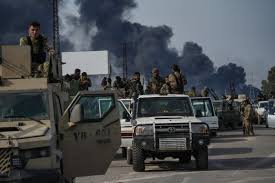A new report by the Syrian Center for Media and Freedom of Expression (SCM) has documented sweeping human rights violations in Syria’s coastal region and parts of Hama following the fall of the Assad regime in December 2024. The report, titled “After the Regime… Before the State,” focuses on a wave of violence that erupted in March 2025, including extrajudicial killings, forced displacement, torture, and property destruction—much of it driven by sectarian motives.
The investigation, based on verified testimonies, open-source data, and field evidence, reveals that at least 1,060 people were killed between March 6 and 9, including 671 civilians, among them 71 women and 61 children, as well as 218 members of the General Security Directorate.
The violence occurred primarily in Latakia, Tartous, and Hama provinces and was triggered by clashes between local armed groups—some linked to remnants of the former regime—and the transitional government’s forces. The report also indicates that the chaos was exacerbated by a wave of collective dismissals of public sector employees from the Alawite community, fueling a perception of targeted retribution.
Massacres and Sectarian Targeting
The report provides grim details of massacres carried out in multiple villages, including sniper killings, arbitrary executions, and aerial bombings. In several cases, victims were reportedly asked about their sectarian identity before being killed. The SCM documented 61 locations where mass killings or extrajudicial executions took place.
Witness testimonies describe horrific scenes: children terrorized at gunpoint, elderly people insulted and abused, and civilians forced to chant slogans glorifying Bashar al-Assad during detention. Women and survivors recounted traumatic experiences of losing family members and being psychologically tormented in front of their children.
The report also highlights rampant looting and destruction of homes and shops, sometimes carried out under the protection—or with the complicity—of armed factions affiliated with the transitional authorities. The state’s failure to intervene swiftly or protect civilians fueled mistrust in the transitional government’s investigative committee and justice mechanisms.
Foreign Fighters and Heavy Weapons
SCM’s findings indicate that foreign fighters participated in the attacks, and that a wide array of weapons were used, including drones, rocket launchers, and helicopters. In one documented incident, Syrian army helicopters dropped explosive devices near a military academy in Jableh.
Social Fractures and Dangerous Precedents
The report situates these events within the broader context of Syria’s deep-rooted sectarian divisions, warning that the collapse of the regime without a structured transition has led to revenge-driven violence. While some communities were targeted as “loyalists” of the former regime, others were subjected to collective punishment.
Despite the violence, the report also documents acts of solidarity across sectarian lines. In several instances, Sunni residents sheltered their Alawite neighbors or helped injured security personnel, defying the prevailing atmosphere of hate.
Calls for Justice and Accountability
The Syrian Center for Media and Freedom of Expression concludes the report with urgent calls for independent investigations, protection of witnesses, and transitional justice mechanisms that avoid collective punishment. It warns that without a transparent and inclusive approach, Syria risks repeating cycles of revenge and impunity.


